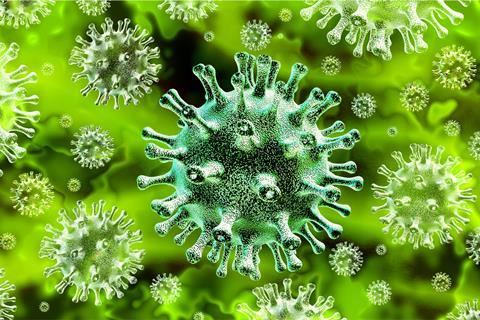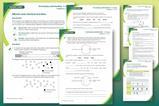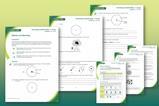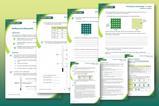A range of chemistry topics students will want to understand about this new virus
Download this
Inform your students’ about coronavirus: what it is, how it’s spread and how soap and alcohol-based sanitisers work against it.

How is coronavirus spread?
Coronavirus is a type of virus called an envelope virus. It consists of RNA enclosed in a phospholipid protein envelope. The virus self-assembles from RNA, proteins and lipids. The lipids form a protective coat around the virus.
Coronavirus is thought to spread mainly from person-to-person contact. This needs close contact – within about two metres of each other. Droplets produced when a person sneezes or coughs can land on the mouths or noses of people nearby.
It is possible that if the droplets land on a hard surface the virus can survive for hours or days. If a person touches the infected surface they may then touch their own mouth or nose and become infected.
How to prevent the spread of coronavirus
Washing hands with soap and water for 20 seconds or using an alcohol-based hand sanitiser can disrupt the virus. Both soap and alcohol are thought to disrupt the lipid membrane.
Use the starter slides or worksheet with your class (16–18) to help them think in more detail about how the virus spreads and the chemistry of how soap and alcohol can prevent the spread of coronavirus.
Read more about coronavirus in Chemistry World.
Downloads
EiC Coronavirus worksheet
Word, Size 70.69 kbEiC Coronavirus worksheet
PDF, Size 49.52 kbEiC Coronavirus worksheet answers
Word, Size 73.83 kbEiC Coronavirus worksheet answers
PDF, Size 26.28 kbEiC Starter slide coronavirus_1
PowerPoint, Size 4.94 mbEiC Starter slide coronavirus_1
PDF, Size 72.77 kbEiC Starter slide coronavirus_2
PowerPoint, Size 0.2 mbEiC Starter slide coronavirus_2
PDF, Size 60.91 kbEiC Starter slide coronavirus_3
PDF, Size 47.65 kbEiC Starter slide coronavirus_3
PowerPoint, Size 0.13 mb














No comments yet